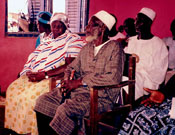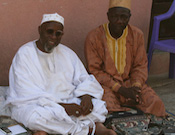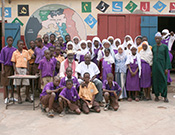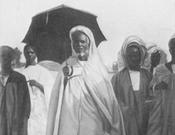|
|
|
This digital library contains archival and research materials that explore Islamic practices in the West African countries of Senegal and Ghana. Presented in six galleries of audio and video interviews, transcripts, photographs, maps, documents, and multimedia presentations, these resources shed much-needed light on how Muslims in West Africa accept religious difference and create productive interactions among Christians, Muslims, and practitioners of other faiths.





